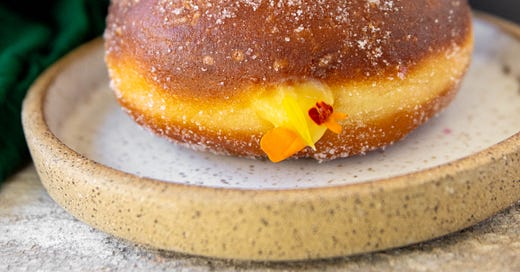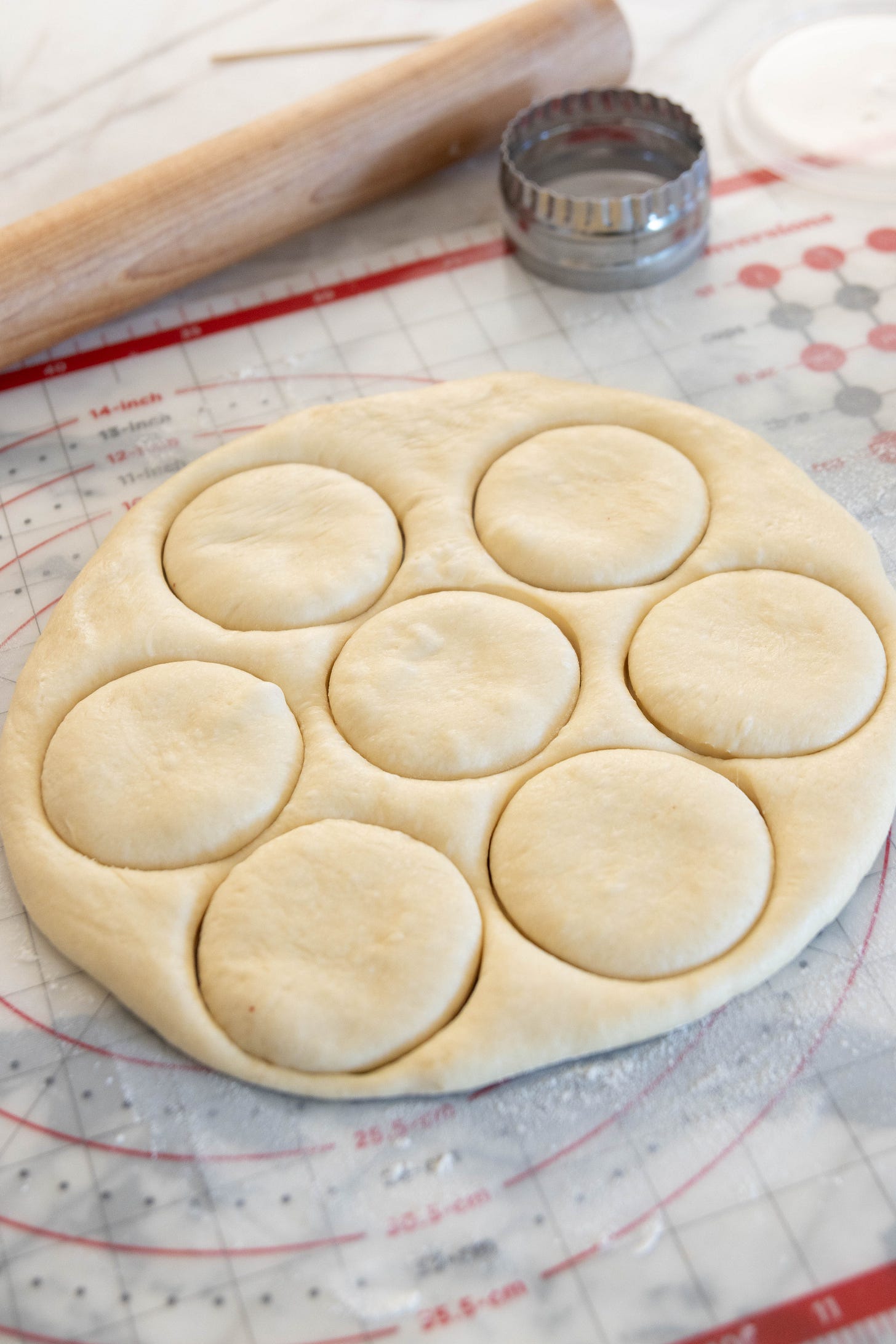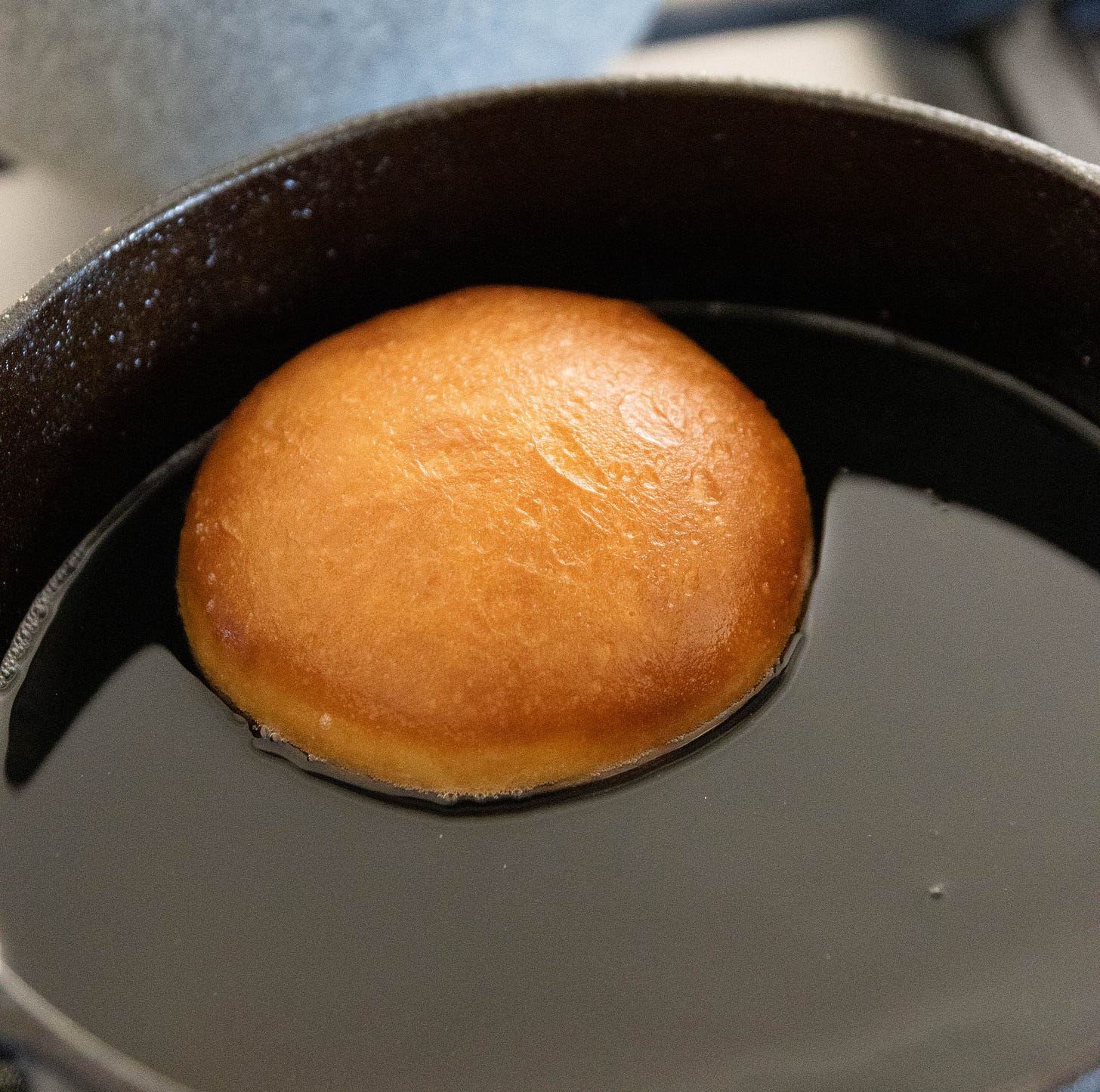Mango Curd Filled Donuts, Cooking tips with Yeast, and more!
Donut heaven, what's the difference between instant and active dry yeast and more!
This post contains affiliate links.
Hey everyone!!
I have been loving this week! All my recipes have been working out, and things are going smoothly (other than our bike ride this week where Elara straight up smashed into Rhut’s bike and fell over, and I had to smash my brakes so hard that I bruised my groin trying to stop myself from running Elara’s head over). For the most part….the stars are aligning!
This weekend I’m heading to Berkeley to check out their restaurant week options and to Sonoma for the CA Artisan Cheese Festival! It’s my birthday weekend, and honestly, I would love nothing more than to eat my weight in cheese to celebrate.
On the blog this week:
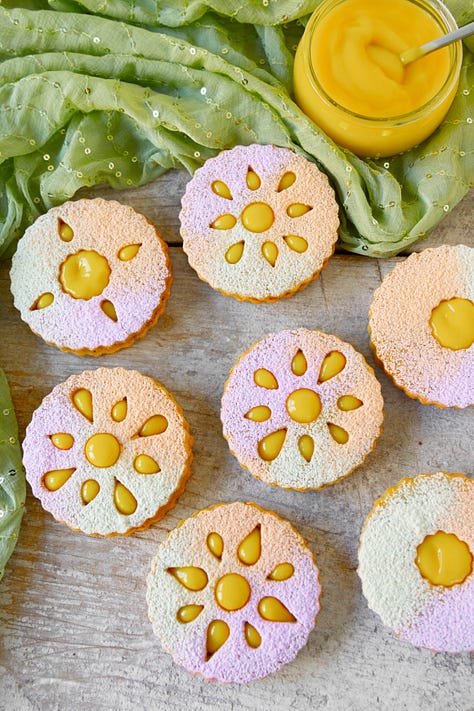
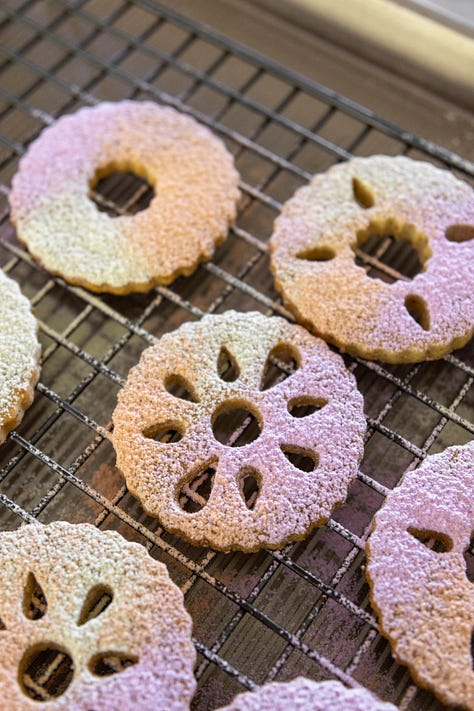
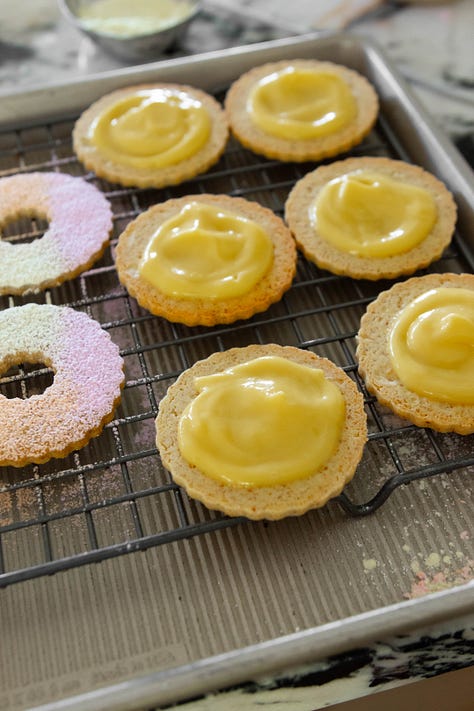
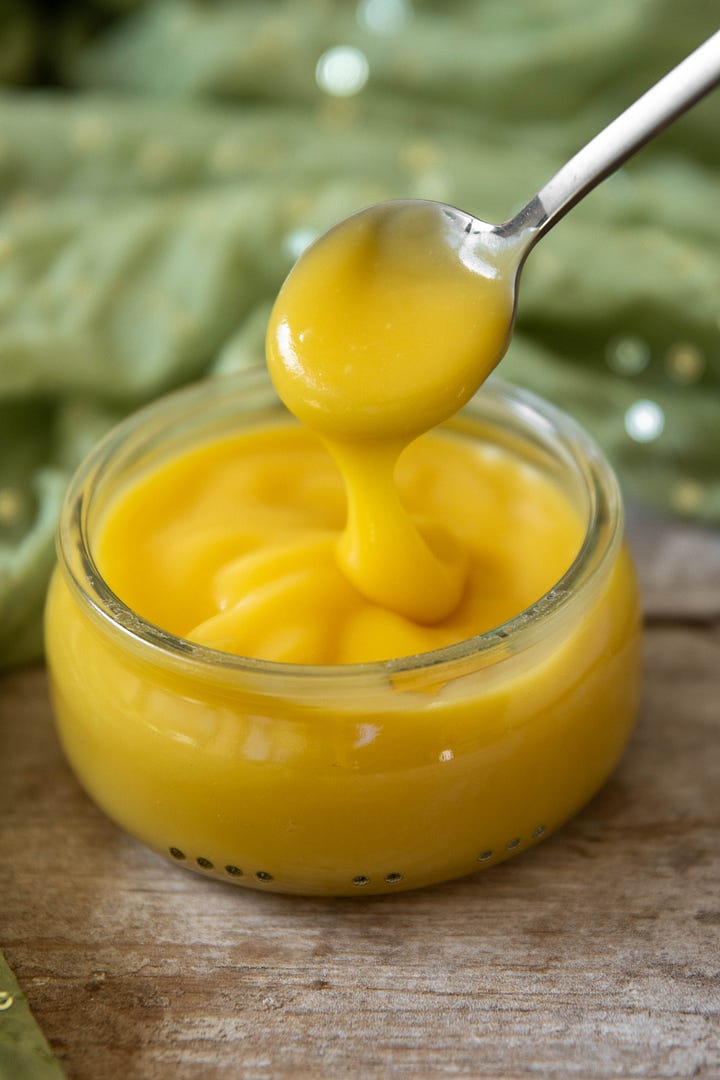
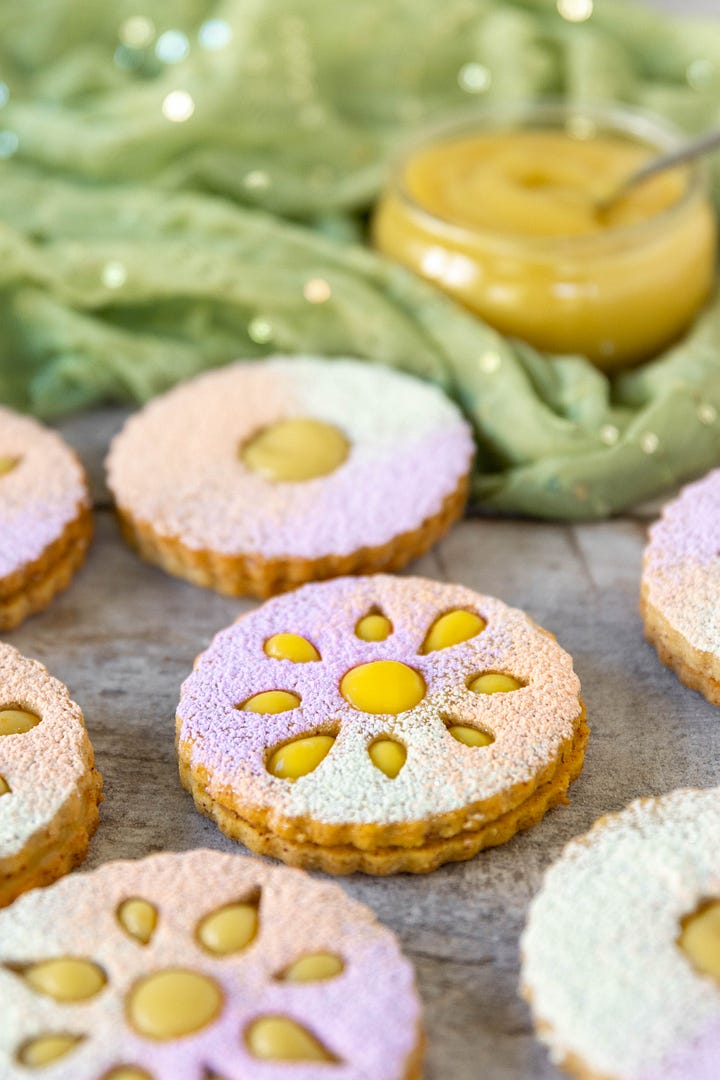
I made some Holi Linzer cookies! I dreamt these up over the weekend and just wanted to see if it was possible, and they turned out exactly how I imagined them to be! The star was the eggless Meyer lemon and mango curd- it was soooo silky smooth! I know food can’t be sexy, but damn, this mango curd was sexy! If you want to simplify it- you can skip the intricate cutout and cut a small circle out from the center and dust it with colored powdered sugar!
Mango Curd Filled Donuts
I ended up making a triple batch of mango curd, so I asked you guys on IG stories what I should make, and a lot of you said donuts! These are deep-fried yeast donuts, rolled in sugar, and then filled with mango curd. You can make them eggless by substituting the egg with an additional 2 tbsp milk and 2 tbsp unsalted butter.
Here are some key elements you need to keep in mind when making these donuts:
Autolyse- this is a technique used in bread making where flour and water are mixed together to form a shaggy dough and then left to rest for 15 minutes up to a couple of hours before further kneading. While the dough rests, enzymes help break down complex sugars and proteins in the flour. It allows the flour to hydrate, which makes it easier to knead. This process also helps improve the texture and flavor by allowing the enzymes to break down the starches into simpler sugars, which can then be fermented by yeast during proofing.
Kneading- This dough is super high in hydration, meaning there is a lot of liquid in it. You can NOT make this dough by hand because of that. It’s too sticky and takes quite some time and force to get it together. You need to use a stand mixer fitted with a dough hook. The dough will initially look super tacky and wet, and it’ll stick to the sides of the bowl. As the dough gets kneaded by the dough hook, it’ll come together and form a dough ball that doesn’t stick to the sides of the wall. If you hit 10 minutes and it still hasn’t happened- keep mixing it! Trust the process. You want to do a window pane test to see when it’s done. You take a small portion of dough and stretch it until it’s so thin you can see the light come through it (check the recipe video to see!). This means enough gluten has formed, and the dough is nice and elastic- which leads to lots of bubbles and a soft, fluffy donut!
Thickness—I made a mistake when I flattened my proofed dough out and smushed it a little thinner than I wanted, which resulted in some skinny donuts. Make sure to Pat out the dough to 1/2-inch thick! If you go thinner, you’ll end up with skinny donuts with no room for filling. A 3-inch cutter is perfect for medium donuts.
Proofing—make sure the donuts don’t overproof. When poked during the final proofing, the dough should gently spring back. If it doesn’t spring back, the dough has over-proofed, and you’ll end up with flatter donuts.
Frying- I fry the donuts at 340°F. This is a good temperature where you can cook the donuts without] it getting too dark on the outside, and they avoid being raw on the inside. Use a thermometer to ensure you stay in a temperature range of 335-340°F for a perfectly cooked donut!
Sugar—now you don’t HAVE to do this, but if you want the traditional donut look, you can roll the donuts in granulated sugar while they’re warm. This will help the sugar stick to them better.
Filling—Make sure the donuts are completely cooled before filling them; otherwise, the curd will melt in them! I used a filling tip to pipe the donuts with the curd, but you can also insert the plastic tip into the donut.
This recipe makes 10 donuts. You’ll need to make a double batch of my mango curd recipe ahead of time, OR you can use storebought lemon curd, shrikhand, or even homemade whipped cream instead.
Here is the recipe plus recipe video:
Keep reading with a 7-day free trial
Subscribe to Cardamom Crew to keep reading this post and get 7 days of free access to the full post archives.

